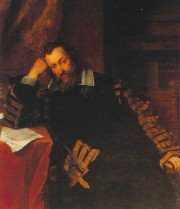* * *
Trial and execution
Mary was put on trial for treason by a court of about 40 noblemen, including Catholics, after being implicated in the Babington Plot and after having allegedly sanctioned the attempted assassination of Elizabeth. Mary denied the accusation and was spirited in her defence. One of her more memorable comments from her trial was "Remember Gentlemen the Theatre of history is wider than the Realm of England". She drew attention to the fact that she was denied the opportunity of reviewing the evidence or her papers that had been removed from her, that she had been denied access to legal counsel and that she had never been an English subject and thus could not be convicted of treason. The extent to which the plot was created by Sir Francis Walsingham and the English Secret Services will always remain open to conjecture.
In a trial presided over by England's Attorney General Sir John Popham, (later Lord Chief Justice), Mary was ultimately convicted of treason, and was sentenced to beheading at Fotheringhay Castle, Northamptonshire on February 8, 1587. She had spent the last hours of her life in prayer and also writing letters and her will. She expressed a request that her servants should be released. She also requested that she should be buried in France.
The government was eager to quash any attempts to obtain relics.
Her rosary beads and Prayer Book were the few items carried to her execution that can be considered to have survived.
In response to Mary's death, the Spanish Armada sailed to England to depose Elizabeth, but it lost a considerable number of ships in the Battle of Gravelines and ultimately retreated without touching English soil.
Mary's body was embalmed and left unburied at her place of execution for a year after her death. Her remains were placed in a secure lead coffin (thought to be further signs of fear of relic hunting). She was initially buried at Peterborough Cathedral in 1588, but her body was exhumed in 1612 when her son, King James I of England,
ordered she be reinterred in Westminster Abbey.

It remains there, along with at least 40 other descendants, in a chapel on the other side of the Abbey from the grave of her cousin Elizabeth. In the 1800s her tomb and that of Elizabeth I were opened to try to ascertain where James I was buried; he was ultimately found buried with Henry VII.
http://en.wikipedia.org/wiki/Mary_queen_of_scots
* * *
picture of Westminster Abbey by Christine (bpc) at flickr
* * *

No comments:
Post a Comment